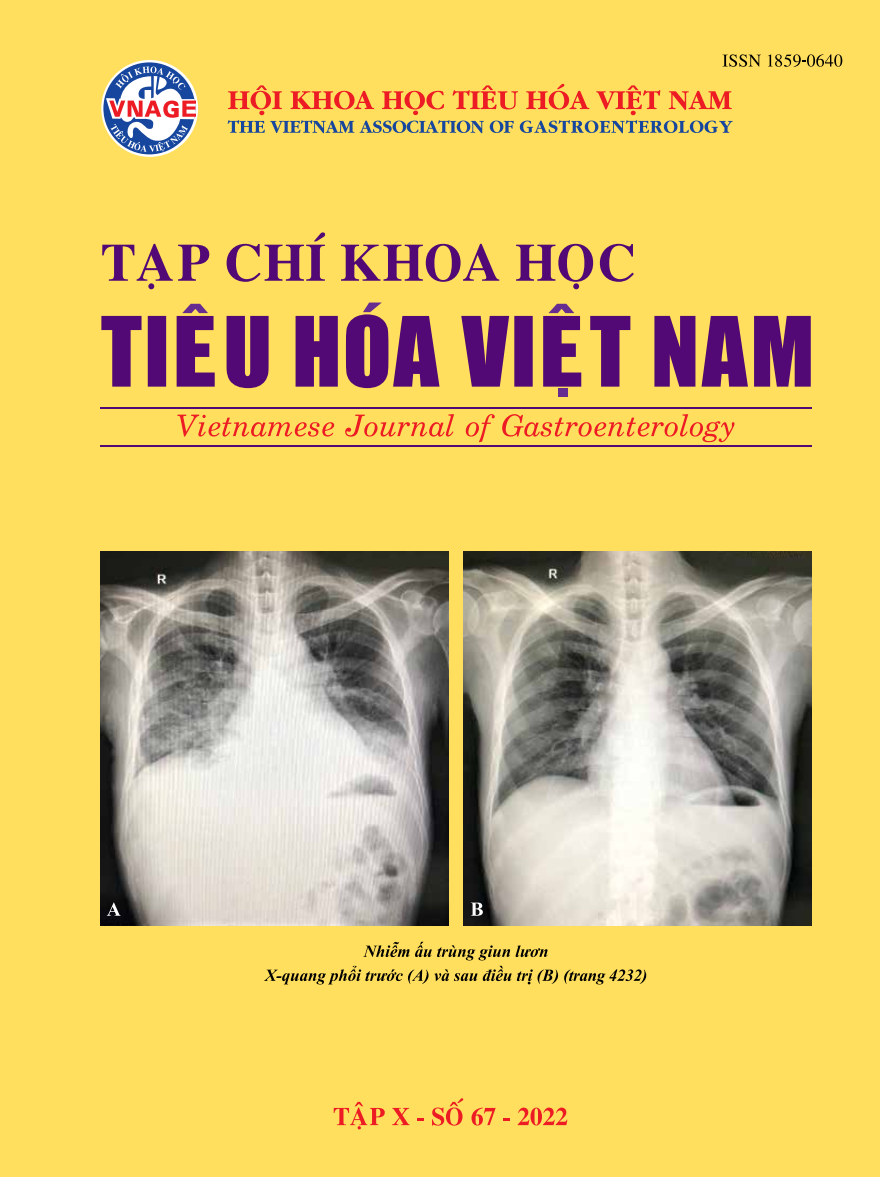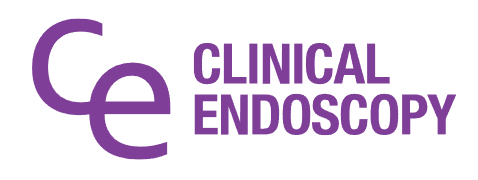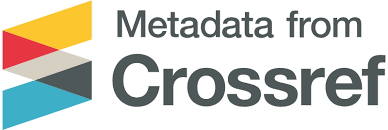Đặc điểm lâm sàng và nội soi chảy máu tiêu hoá cao ở bệnh nhân dùng thuốc chống huyết khối
Từ khóa:
chảy máu tiêu hóa, thuốc chống huyết khốiTóm tắt
Mục tiêu: Nghiên cứu đặc điểm lâm sàng và hình ảnh nội soi chảy máu tiêu hoá cao ở bệnh nhân dùng thuốc choáng huyết khoái. Đối tượng và phương pháp nghiên cứu: Nghiên cứu mô tả cắt ngang trên 49 bệnh nhân chảy máu tiêu hoá có sử dụng thuốc choáng tại Bệnh viện Trung ương Quân đội 108. Kết quả: Thời gian sử dụng thuốc trung bình đến lúc có biểu hiện chảy máu tiêu hoá là 3,25 – 48,18 ngày. Trong đó, 100% bệnh nhân sử dụng thuốc choáng huyết khoái liều thấp. 100% bệnh nhân có nôn máu hoặc đại tiện phân đen. Đa số bệnh nhân chảy máu tiêu hoá mức độ nhẹ hoặc vừa (93,9%). Loét ở dạ dày gặp nhiều hơn so với loét tá tràng và có 27,6% loét cả dạ dày và tá tràng. Nguy cơ chảy máu tiêu hoá do loét dạ dày cao ở bệnh nhân sử dụng thuốc chống kết tập tiểu cầu là 4,03 với 95% CI từ 1,16 – 10,00 (p < 0,05). Kết luận: Đa số bệnh nhân sử dụng thuốc chống huyết khối bị XHTH ở độ nhẹ và vừa. XHTH do loét dạ dày gặp nhiều hơn so với loét tá tràng. Bệnh nhân sử dụng thuốc chống kết tập tiểu cầu làm tăng nguy cơ chảy máu dạ dày lên 4,03 lần.
Tài liệu tham khảo
1. Huỳnh Hiếu Tâm (2019), "Nghiên cứu hiệu quả của tiêm hoa hoặc kèm cầm máu qua nội soi phối hợp với thuốc ức chế bơm proton liệu cao tốn mạch ở bệnh nhân chảy máu tiêu hóa do loét dạ dày tá tràng". Luận án Tiến sĩ y học, Trường Đại học Y Dược, Đại học Huế.
2. Allen P.B., Tham T.C.K (2016), "Approach to upper gastrointestinal bleeding", Gastrointestinal Emergencies, John Wiley & Son, pp. 12-18.
3. BMJ (2002), "Antithrombotic Trialists Collaboration. Collaborative meta-analysis of randomised trials of antiplatelet therapy for prevention of death, myocardial infarction, and stroke in high risk patients". BMJ, 2002;324(7329):71–86.
4. Bytzer P., Connolly S.J., Yang S., et al. (2013), "Analysis of upper gastrointestinal adverse events among patients given dabigatran in the RE-LY trial", Clin Gastroenterol Hepatol, 2013;11(3):246–252.e1–e5.
5. Deutsch D., Romegoux P., Boustière C., et al. (2019), "Clinical and endoscopic features of severe acute gastrointestinal bleeding in elderly patients treated with direct oral anticoagulants: a multicenter study", Therap Adv Gastroenterol, 2019, 12: p.1756284819851677.
6. Hippisley-Cox J., Coupland C. (2014), "Predicting risk of upper gastrointestinal bleed and intracranial bleed with anticoagulants: cohort study to derive and validate the QBleed scores", BMJ, 2014; 349: p.g4606.
7. Sostres C., Marcen B., Laredo V., et al. (2019), "Risk of rebleeding, vascular events and death after gastrointestinal bleeding in anticoagulant and/or antiplatelet users", Aliment Pharmacol Ther, 2019, 50(8): p.919-929.
8. Tabibian N. (1989), "Acute gastrointestinal bleeding in anticoagulated patients: a prospective evaluation", Am J Gastroenterol, 1989;84:10–12.
9. Thomopoulos K.C., Mimidis K.P., Theocharis G.J., et al. (2005), "Acute upper gastrointestinal bleeding in patients on long-term oral anticoagulation therapy: endoscopic findings, clinical management and outcome", World J Gastroenterol, 2005;11(9): p.1365-8.
10. Mitchell S Cappell (2008), "Initial management of acute upper gastrointestinal bleeding: from initial evaluation up to gastrointestinal endoscopy", Med Clin North Am, 2008 May;92(3):491-509.









